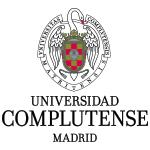Social network analysis of poultry movements in Argentina during 2009 and 2010
Comunicación presentada en 13th International Symposium on Veterinary Epidemiology and Economics
20 de agosto de 2012
Linares FJ., Martinez-Lopez B. y Sanchez-Vizcaino JM.
The poultry production in Argentina is the second largest industry after the cattle, and for that reason, the potential introduction and spread of exotic diseases affecting poultry would have severe socio-economic consequences in the country. In order to allocate surveillance strategies to prevent and rapid control infectious
diseases affecting poultry, the characterization of the structure and contact patters between poultry farms is crucial. However, there are very few studies describing in detail the animal movement contacts between poultry farms and none has been developed in Argentina. The study presented here is aimed to describe in detail the structure and the trade flows among the poultry farms in Argentina using graph theory and social network analysis. Particularly, data on poultry farms (i.e. census, location, etc.) and poultry movements from January 2009 to December 2010 were obtained from the National Service for Agrifood Health and Quality (SENASA). The poultry directed network was constructed using poultry farms as nodes and poultry movements between farms as links. Degree, closeness and betweeness centrality measures and other SNA metrics were computed to identify ‘important’ nodes that may be at particular high risk for
disease introduction and spread. Analyses were performed using R Language v2.10.1 with igraph library and network was visualized using ArcGIS 9.3 (ESRI). The poultry contact network was compounded by
6,330 nodes with 50,374 links for 2009 and, 6,458 nodes with 50,566 links for 2010. Nodes with the highest number of outgoing and ingoing links correspond to a hatched farm and meat production farm, respectively. This is one of the very first studies characterizing the poultry movements and identifying poultry farms, periods and regions at highest risk for potential disease introduction and/or spread, and will be useful for the design of risk-based surveillance strategies and contingency planning of diseases affecting poultry
 | Servicio de Inmunología Viral y Medicina Preventiva (SUAT). Centro de Vigilancia Sanitaria Veterinaria (VISAVET). Universidad Complutense (UCM). |
 | Departamento de Sanidad Animal. Facultad de Veterinaria. Universidad Complutense (UCM). |
Enlace a 13th International Symposium on Veterinary Epidemiology and Economics

